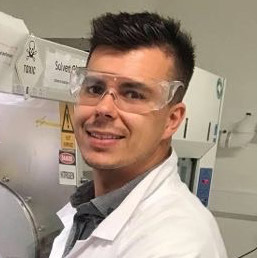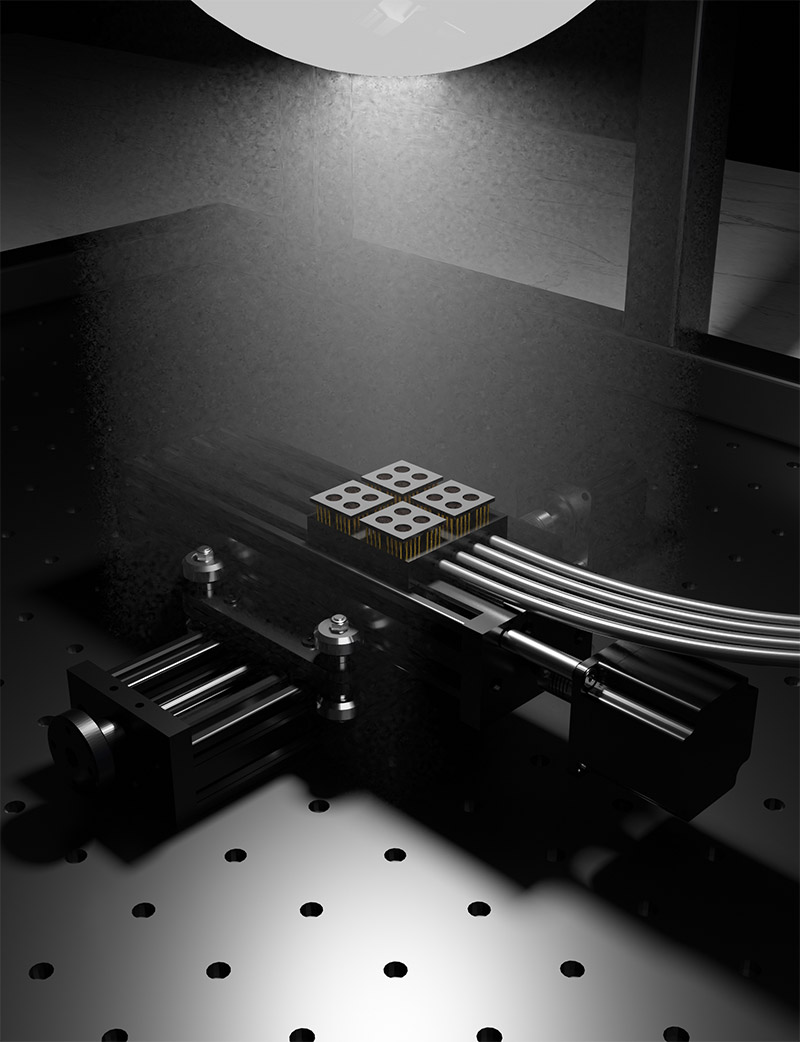

Sometimes you need the perfect candidate to find the perfect candidate.
Scientists at the ARC Centre of Excellence in Exciton Science are among the world-class research groups trying to identify the best combination of new materials, known as perovskites, to design and build the next generation of solar panels.

Set to be cheaper and more flexible than silicon, the problem with perovskites - which can be created in laboratories from an overwhelming variety of different elements - is that we’re spoiled for choice.
Valuable time and energy studying these combinations can be lost in directions that ultimately prove to be fruitless, so Exciton Science Chief Investigator Udo Bach, a Professor in the Department of Chemical Engineering at Monash University, decided to find a solution.
That’s where the star of our show, PhD candidate Adam Surmiak, comes in.
“Professor Bach is about to build a unique automated discovery platform, here in Melbourne,” Adam explained.
“He proposed to me that I could take a part in that and make something better than anything else in the world. We both sat down together and we said, ‘Let’s design and build something that no-one else has ever done that can speed up the discovery process’.”
Udo’s vision was to design and build a machine that could automatically study large batches of ‘candidate’ solar cell materials, generating accurate, reliable data that saves researchers time and ensures they can have confidence in their results.
The platform must be versatile enough to serve as a cross-study system for solar cell research groups around the world, and Udo has also secured the collaboration of researchers investigating next-generation battery and fuel cells.
In Adam, he found someone who was not only uniquely equipped to make this ambitious proposal a reality, but who shared his eagerness to set the bar high.
“Professor Bach was looking for someone who has a strong background in system design and photovoltaics,” said Adam, who was working in Australia as a programmer with expertise in electronics, microsystems and photonics.
“I’ve got a double degree in electronics and mechanics. I specialised myself in Micro Electro-Mechanical System (MEMS) sensors and parameters monitoring – a perfect skillset for this particular project.
“I learned more about the problems in novel solar materials and characterisation instruments, which is critically important for the precise design of these platforms. Because it’s not trivial and it is easy to overlook some parameters. There’s so many things you need to know.”
One of the biggest priorities for Udo and Adam was to guarantee that the results produced by their machine could be replicated in other contexts, due to the obstacles posed by perovskites in comparison to their more established and predictable counterpart silicon.
“The first step was to try to speed up the discovery process by understanding the problems associated with the measurements,” Adam said.
“Because the testing samples are really fragile and can behave differently, you are unable to replicate your results if you’re not going to characterise it properly. With the system we’ve got now, we can track precisely what we measure and do it fast.
“With this research, you can trust the data - unlike manual measurements, where all you have is a sum of approximations. With our system you measure solar cells simultaneously, not sequentially, and you can narrow down and speed up the search. And because you can measure 16 cells at once on four substrates, you’ve got 16 times more results and you can trust those results. They are highly accurate.”
Adam, Udo and their collaborators published the results of this project in April in a paper titled “High‐Throughput Characterization of Perovskite Solar Cells for Rapid Combinatorial Screening”, appearing in the journal Wiley VCH RRL Solar.
The new equipment and the data it produced is already making an impact in the field, with Adam receiving positive feedback and requests for bespoke materials as well as various upgrades, the results of which are due to be published in more high-impact research early in 2021.

Adam fabricating a batch of perovskite solar cell using his newly designed substrate in an inert gas glovebox system.
I learned more about the problems in novel solar materials and characterisation instruments, which is critically important for the precise design of these platforms. Because it’s not trivial and it is easy to overlook some parameters. There’s so many things you need to know.

The conceptual design of the equipment including aligning multiple solar cells to be measured under one solar-simulated light in parallel and in real time.
Looking back at the ambitious goal he and Udo set for themselves, Adam said: “We accomplished that. We delivered the project very fast and now we’re improving it.
“The next step is to increase the throughput to 144 cells and ideally fully machine-made samples will be characterised, preferably in a long-term study using fully automated and accurate systems. The research focus in Australia will usher the door towards fabrication of large-scale panels, not only the test samples.
“On top of that, CSIRO have been inspired by our cable technology and have transitioned to a four-wire cell testing. We came up with the system and we’ve proven that it’s giving you more precise results.”
That endorsement from Exciton Science’s industry partner is just one of many indications that Adam and Udo have achieved something truly unique with their materials discovery platform project.
And following the receipt of a major grant from the Australian Renewable Energy Agency (ARENA) in late 2020 to significantly expand the concept, both Udo and Adam hope to see affordable, Australian-made solar panels on the market in the future.

The system will accelerate research and will speed up the transition of perovskite solar technology from the laboratory to large-scale production to satisfy increasing energy demands without further harm to the environment.